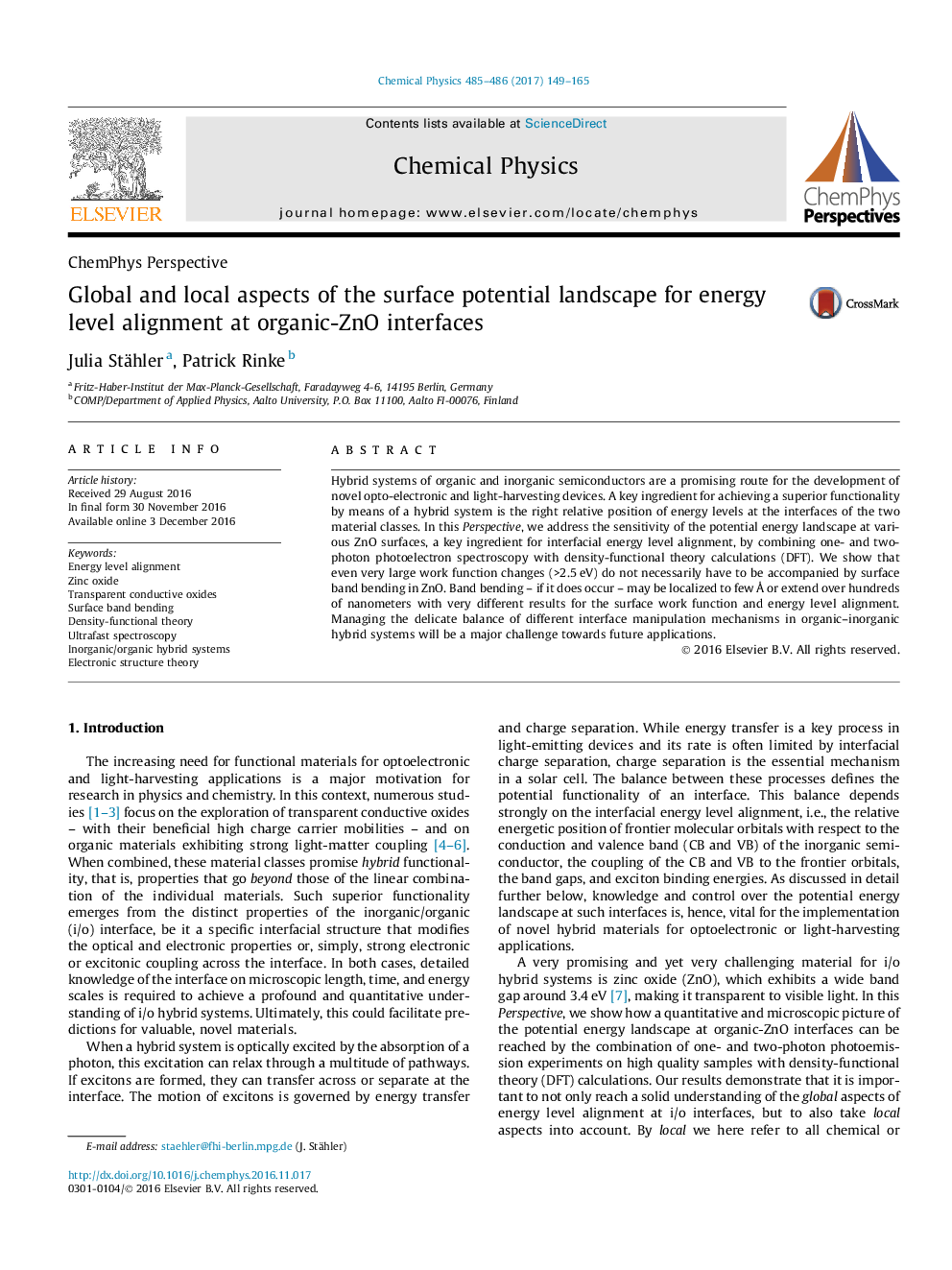| Article ID | Journal | Published Year | Pages | File Type |
|---|---|---|---|---|
| 5372742 | Chemical Physics | 2017 | 17 Pages |
â¢Tailoring the ZnO surface electronic structure by organic thin films.â¢Large work-function increases or decreases with donor, dipolar, and acceptor species.â¢Consistent atomistic insight by combining theory and experiment.â¢Elucidating the role of charge transfer, band bending, and dipole moments.â¢Delicate balance between competing global and local phenomena.
Hybrid systems of organic and inorganic semiconductors are a promising route for the development of novel opto-electronic and light-harvesting devices. A key ingredient for achieving a superior functionality by means of a hybrid system is the right relative position of energy levels at the interfaces of the two material classes. In this Perspective, we address the sensitivity of the potential energy landscape at various ZnO surfaces, a key ingredient for interfacial energy level alignment, by combining one- and two-photon photoelectron spectroscopy with density-functional theory calculations (DFT). We show that even very large work function changes (>2.5 eV) do not necessarily have to be accompanied by surface band bending in ZnO. Band bending - if it does occur - may be localized to few à or extend over hundreds of nanometers with very different results for the surface work function and energy level alignment. Managing the delicate balance of different interface manipulation mechanisms in organic-inorganic hybrid systems will be a major challenge towards future applications.
Graphical abstractDownload high-res image (181KB)Download full-size image
